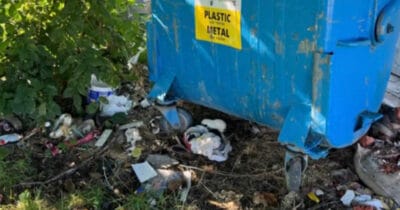
Animal shelters do everything they can to protect and find homes for stray cats and dogs, but unfortunately there is often a limit to what they can do. Many shelters have limited space and resources, and sadly have to put down pets at a certain point to make room… even if they’re in fine health.
According to the ASPCA, about 6.5 animals are brought to shelters every year—and 1.5 million shelter animals are euthanized.

But it doesn’t need to be this way. In recent years animal groups have been pushing to make more shelters “no kill,” where animals are only euthanized in situations where it’s the humane thing to do. This movement saw a breakthrough last month when Delaware became the first state to be designated no-kill: all of its shelters had over a 90% animal save rate.
Now, another state has followed in their footsteps: Michigan.
The Michigan Pet Fund Alliance announced that, based on data from 2018, Michigan has an average 90% live release rate, the benchmark to be considered a no-kill state. The vast majority, though not all, of the state’s individual shelters hold this status.
“This is an amazing first for our state,” Deborah Schutt, MPFA founder and chairperson, told WLUC.
2018 Live Release Report findings: ✔️Michigan achieves No Kills status with a 90% statewide average live release for…
Posted by Michigan Pet Alliance on Thursday, September 12, 2019
According to the Detroit Free Press, Michigan shelters are required by law to report their statistics, including the number of euthanizations. The Michigan Pet Fund Alliance has spent the past decade tracking those stats, and has seen the “kill number” reduced from 120,000 in 2009 to 13,000 last year.
The 90% is commonly viewed as the threshold, leaving some room for cases where euthanasia is the humane option, as when an animal is terminally ill and suffering.
To avoid having to put animals down, modern shelters implement systems to keep their shelves cleared. This includes microchipping to easily reunite lost pets, spaying and neutering to keep the stray population low, offering low/no-cost adoption events, and working with rescues and foster families to prevent overcrowding.
“We’re treating animals now, not just, ‘Oh, broken leg and put it down,'” Schutt told FOX 2. “Our appreciation for our pets have changed. We don’t want a catch and kill. We want catch, make them safe.”
It’s a great achievement that shows how far the state has come in bringing down their kill numbers. However, there is still work to be done.
The MPFA says that 138 out of their 174 shelters are no-kill, which still leaves 36 shelters struggling to hit the benchmark.
“While it’s exciting to see Michigan as a state achieve no-kill status by reaching the 90% goal, we still have a few communities struggling to save lives, especially with cats,” Schutt told Detroit Free Press.
“We will continue to work with shelters and rescue organizations to implement best practices, decrease overall length of stay in the shelter and improve the quality of life for homeless pets while they are in shelter.”

Congrats, Michigan! Keep up the good work, and we hope more states follow soon!
Share this story!







